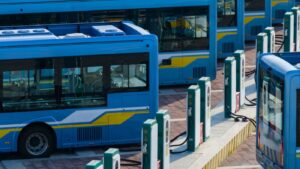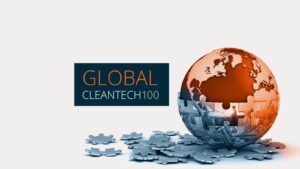Solving Traffic: The highway, the smart way, and the long way off
The term ‘smart city’ implies that cities can be dumb. To the city-dweller, this is often acutely clear when stuck in traffic. In the UK, a recent TomTom Traffic Index report found that the average commuter in Britain will spend five days of every year stuck in traffic. That equates to 47 weeks’-worth[1] in an average lifetime of sitting behind the wheel not going anywhere fast. My own city of London comes in as the 20th most congested city in the world, with three out of the top five in Asia (Chongqing, Jakarta, and Bangkok).

So, what is the solution?
The most obvious answer in this case is the wrong one: build more roads. In the early 2000s, the Tracy Freeway in Houston, which connects downtown Houston to the suburbs 30 miles away, was labelled as the second worst bottleneck in the US, wasting 25 million hours a year for commuters. The state reached for the easiest, yet most expensive, solution of building the widest freeway in the world (at the time), extending 23 lanes at the cost of $2.8 billion. The plan worked for about three years before the added capacity changed driver behavior and induced demand, and the volume of traffic increased to the extent that in its fourth year, the new freeway was slower for more people than the old freeway.
So, what is the smart solution?
There are many, and the smartest solutions are using IoT-enabling technologies, such as Sigfox’s machine-to-machine communications topology, to allow for data collection throughout ‘smart city’ network nodes, such as traffic lights, cars, and smartphones. This sector is vast, and so here we will focus on traffic-specific solutions. On the hardware side, GE’s subsidiary Current has developed a CityIQ sensor that can be installed into streetlights to collect data. The company has already rolled out a $30 million pilot in San Diego to install sensors in lamp posts to improve energy usage and reduce costs for the city, but it also serves as a portal for Current to begin gathering data on traffic, air pollution, and many other factors. On the software side, companies such as Street Light Data, INRIX, and WorldSensing are finding innovative ways to understand traffic flow. This can be achieved via combinations of vehicle connectivity, advanced parking management, dynamic data for city planning and traffic flow optimization to make it safer, cleaner, more convenient and more enjoyable for people to get to where they need to go.
So, what is coming down the road?
While the solutions above are within reach – and indeed being rolled out in cities, vehicles, and infrastructure around the world – there are two further solutions that we are seeing down the road. The first is flying cars. This staple of science fiction is now slowly becoming a reality but with two distinct roadmaps, as covered in February on this blog. The second is tunnelling, or boring, as the soon-to-be-old joke goes. Following Elon Musk’s tweet-reveal of The Boring Company while stuck in traffic in Los Angeles, the company has just released footage of a successful test of a car elevator that could transport goods and vehicles into a tunnel network below LA. Both technologies enable a 3D road network, but both have significant regulatory hurdles to overcome, go around, or burrow under? Perhaps for now, we should all just take a bike.
What do you think? Want to know more about i3 and the content CTG creates? Let us know via comments below, or feel free to reach out via research@cleantech.com.
[1] Based on 5 days in traffic/year, on a working lifetime of 18-65, working 5 days a week.


